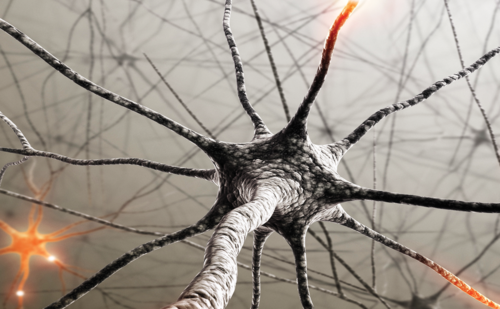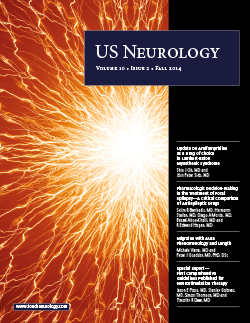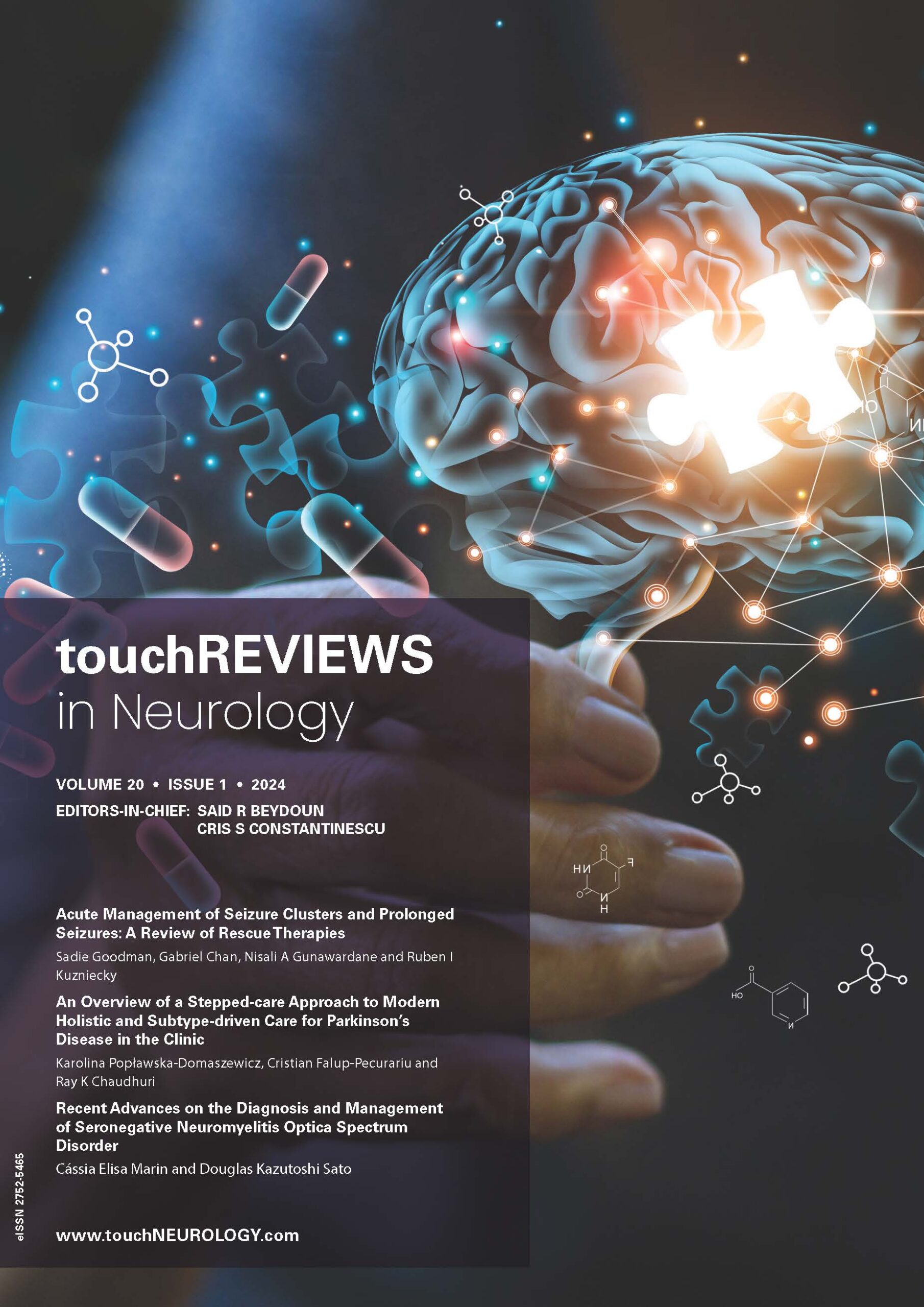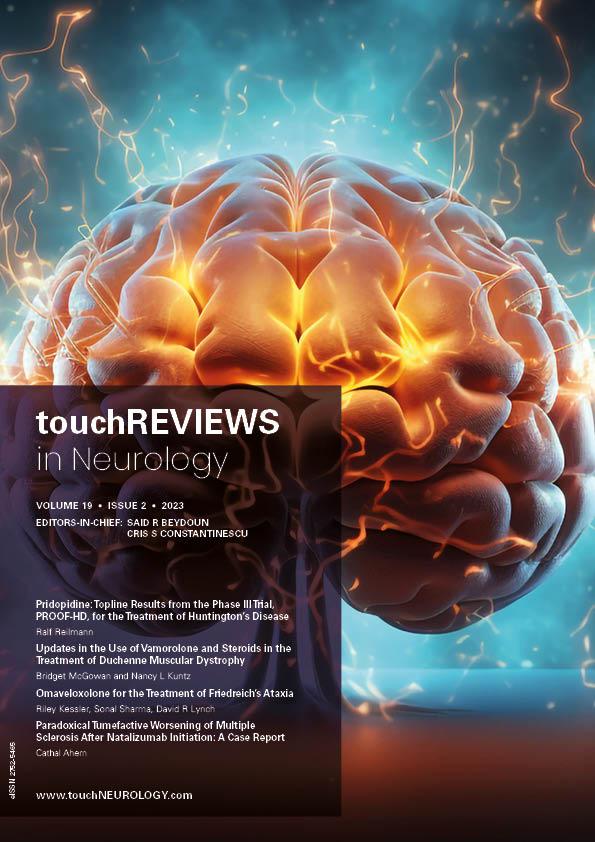US NEUROLOGY – VOLUME 10 ISSUE 2 – FALL 2014
Welcome to the fall edition of US Neurology. This edition features timely review articles, written by esteemed experts, succinctly examining a wide range of important topics. Epilepsy provides a significant focus, with a critical comparison of antiepileptic drugs, followed by four real-life case reports and a review on new developments in magnetic resonance imaging for individuals with epilepsy. We also welcome a special report from Jason E Pope et al. on the first comprehensive guidelines published for neurostimulation therapy. Other important areas are also covered with updates on multiple sclerosis, Parkinson’s disease, and sleep disorders, all providing a worthy focus for our attention. Please peruse and enjoy the expert content and we welcome your feedback.
It is my pleasure to introduce the Winter edition of US Neurology, which brings you a diverse selection of papers covering cutting-edge clinical and research advances, authored by some of the world’s leading figures in their fields. The impact of walking impairments is a serious concern for those individuals with multiple sclerosis (MS). The assessment […]
Neuromuscular Disorders
Lambert-Eaton myasthenic syndrome (LEMS) is a uncommon, but debilitating, neuromuscular disorder that is estimated to affect 2.32 people per million in Europe1 with a prevalence of up to 3,000 cases in the US.2 The disease has an autoimmune etiology in which autoantibodies bind to P/Q-type voltage-gated calcium channels (VGCCs) and decrease the release of acetylcholine […]
Movement Disorders
Making an accurate diagnosis of Parkinson’s disease (PD) is critical for patient counseling and therapeutic management. The methods for diagnosing PD are limited by the lack of definitive diagnostic tests. Despite all the recent advances in imaging and genetics of parkinsonian disorders, the diagnosis of PD remains primarily clinical and is based on nonspecific findings […]
Epilepsy
Epilepsy is a general term used to describe a collection of common, chronic conditions of recurrent and unpredictable seizures. While seizures in newly diagnosed patients are often controlled with a single antiepileptic drug (AED),1 the estimated 30–40 % of patients who are resistant to monotherapy could benefit from a combination of two or more carefully […]
Magnetic resonance imaging (MRI) is the most commonly used noninvasive imaging modality for epilepsy diagnosis, etiologic classification, and management. MRI is mandatory for all patients with new onset epilepsy, particularly for those who do not respond to medication. The primary aim of MRI scanning in an individual with epilepsy is to uncover abnormal brain regions […]
Multiple Sclerosis
A growing body of evidence demonstrates the importance of walking limitations in multiple sclerosis (MS). At the same time, there is increasing pressure on health care providers to monitor the outcomes of their interventions. Owing to its impact on our patients’ functional status, quality of life, and health, walking appears as an essential parameter to […]
Migraine
Migraine is a primary headache (HA) disorder affecting about 18 % of women and 6 % of men in the US and Western Europe.1,2 Migraine is essentially a disabling headache, characterized by moderate to severe head pain, usually accompanied by nausea, photophobia, and phonophobia that may be preceded by focal neurologic symptoms, which are called […]
Sleep Disorders
Many older people purchase the hormone melatonin and consume it orally, each evening, to promote the onset of sleep at bedtime and, particularly, the resumption of sleep after premature nocturnal awakenings. This need for exogenous melatonin to supplement that secreted from the aging pineal arises from the gland’s progressive, agerelated calcification, which decreases the number […]
Surgery
Brain arteriovenous malformations (bAVMs) are rare congenital lesions that confer a lifelong risk for hemorrhage. Treatment options for these lesions include microsurgical resection, embolization, and radiosurgery, alone or in combination. The goal of bAVM intervention is to eliminate the risk for future hemorrhage, which must mean complete obliteration of the lesion. However, treatment also poses […]
Neuropathic Pain
Employing neuromodulation strategies to treat chronic pain has gained momentum in recent years, along with an expansion of the indications. These therapies are safe, reversible, and efficacious, improving both validated pain and functional measures. However, the trial procedure is not without risk and deserves a respectful assessment of the risks and the benefits associated with […]

Trending Topic
Opioid therapy has become a mainstay for the treatment of chronic pain, despite evidence that these medications may be ineffective and even unsafe in this patient population.1,2 In patients with chronic back pain, the use of first-line medications (non-steroidal anti-inflammatory drugs and acetaminophen) declined by 48% from 1999 to 2010; simultaneously, there was a 53% rise […]
Journal Archive
touchREVIEWS in Neurology is a peer-reviewed, free-to-access, bi-annual neurology journal comprising review articles, case reports, practice guides, theoretical discussions, and original research. It features balanced and comprehensive articles written by leading authorities, addressing the most important and salient developments in the field of neurology.
Latest articles videos and clinical updates - straight to your inbox
Log into your Touch Account
Earn and track your CME credits on the go, save articles for later, and follow the latest congress coverage.
Register now for FREE Access
Register for free to hear about the latest expert-led education, peer-reviewed articles, conference highlights, and innovative CME activities.
Sign up with an Email
Or use a Social Account.
This Functionality is for
Members Only
Explore the latest in medical education and stay current in your field. Create a free account to track your learning.















